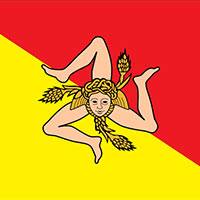San Cataldo (Palermo)
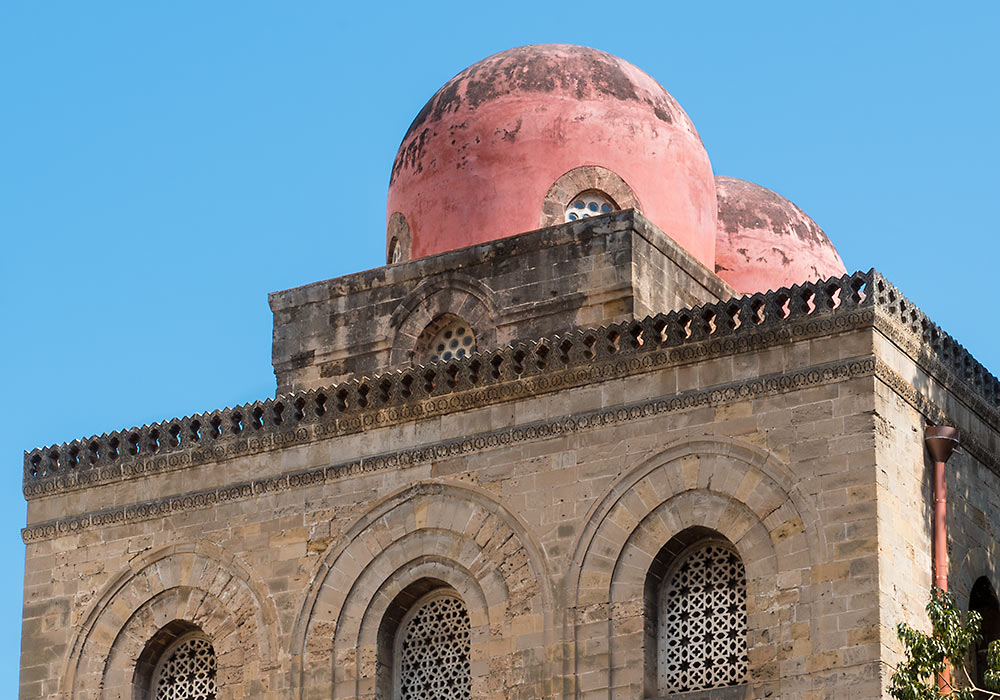
Next to La Martorana is The Church of San Cataldo (Chiesa di San Cataldo), an example of the wonderful Arabian-Norman architecture. San Cataldo is one of the sites in Palermo inscribed on the UNESCO World Heritage List. It was founded by William I's chancellor, Maio of Bari c. 1160. In that year, Maio was assassinated with the result that San Cataldo's interior never was decorated. After 1787 the church served as a post office (!), and later it was restored (in 1885).
On 10 November 1160, a Palermitan gang, acting at the behest of Matthew Bonellus, stabbed Maio of Bari to death in the street. After Maio’s murder, Bonellus fled to Caccamo, but later returned to Palermo. The king had then pressed Bonellus for a substantial inheritance payment, which was said to have prompted him to instigate the rebellion of April 1161.
Metcalfe, Alex. Muslims of Medieval Italy (The New Edinburgh Islamic Surveys) . Edinburgh University Press. Kindle Edition.
(Source: Metcalfe, Alex. Muslims of Medieval Italy (The New Edinburgh Islamic Surveys) . Edinburgh University Press. Kindle Edition.)
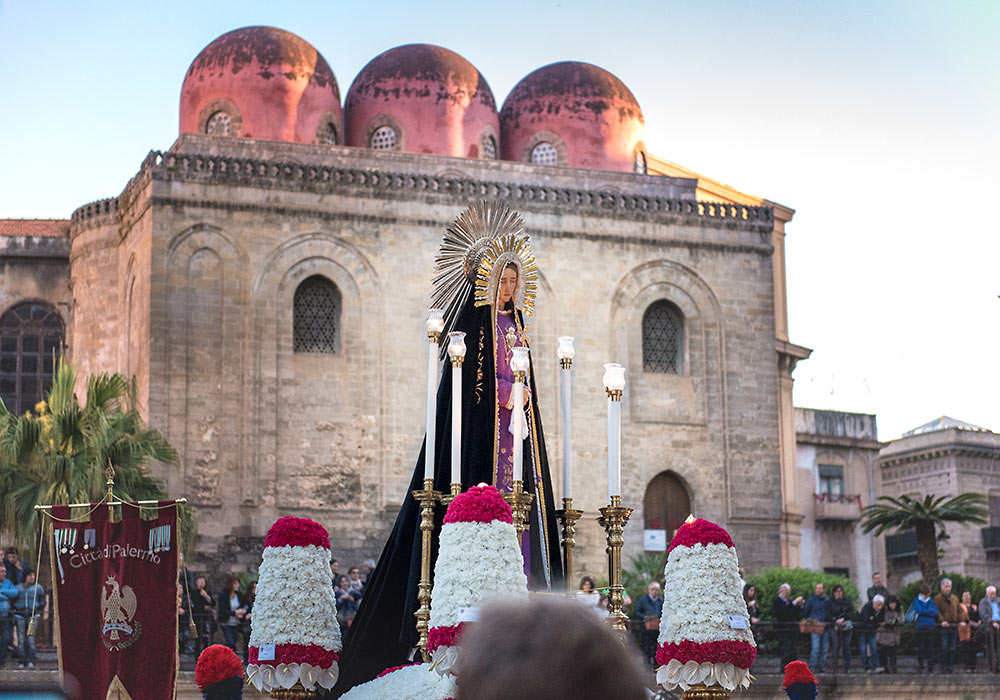
Easter procession passing San Cataldo.
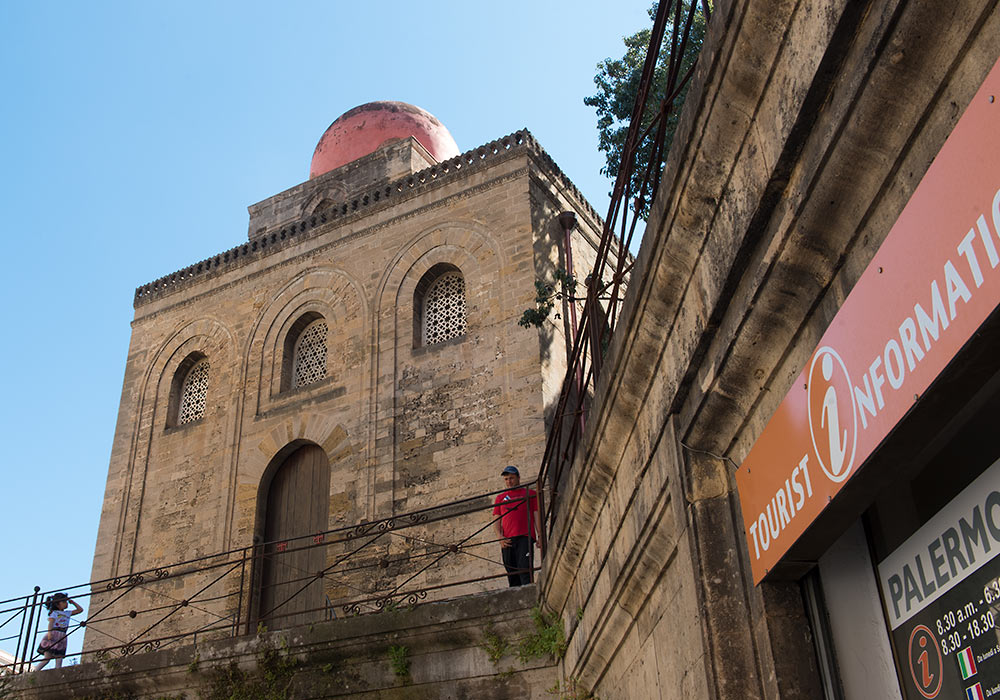
San Cataldo seen from the Tourist Information.
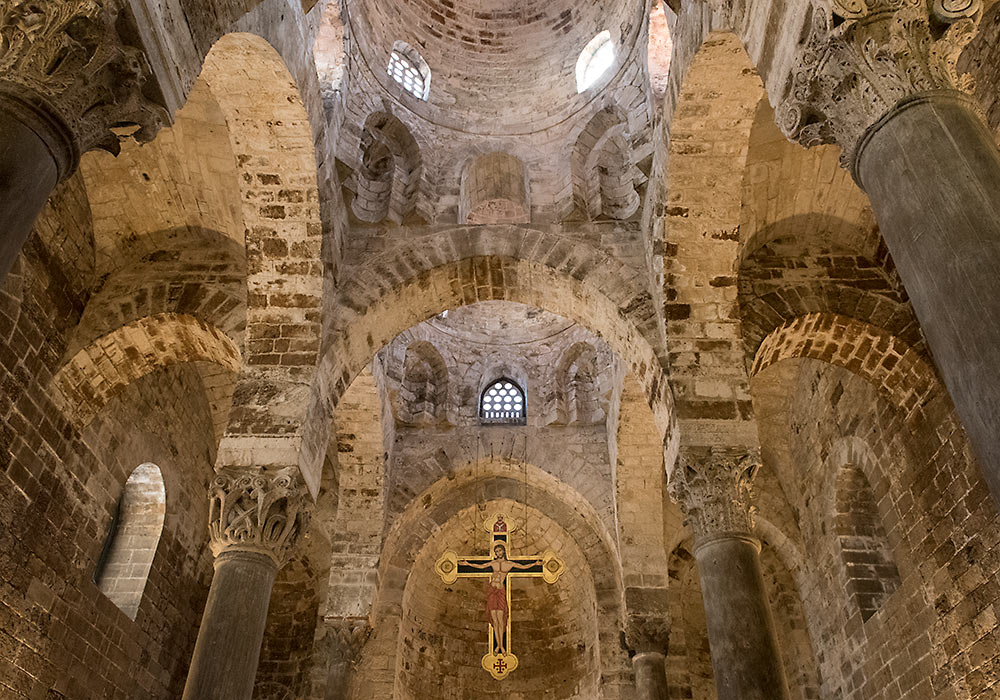
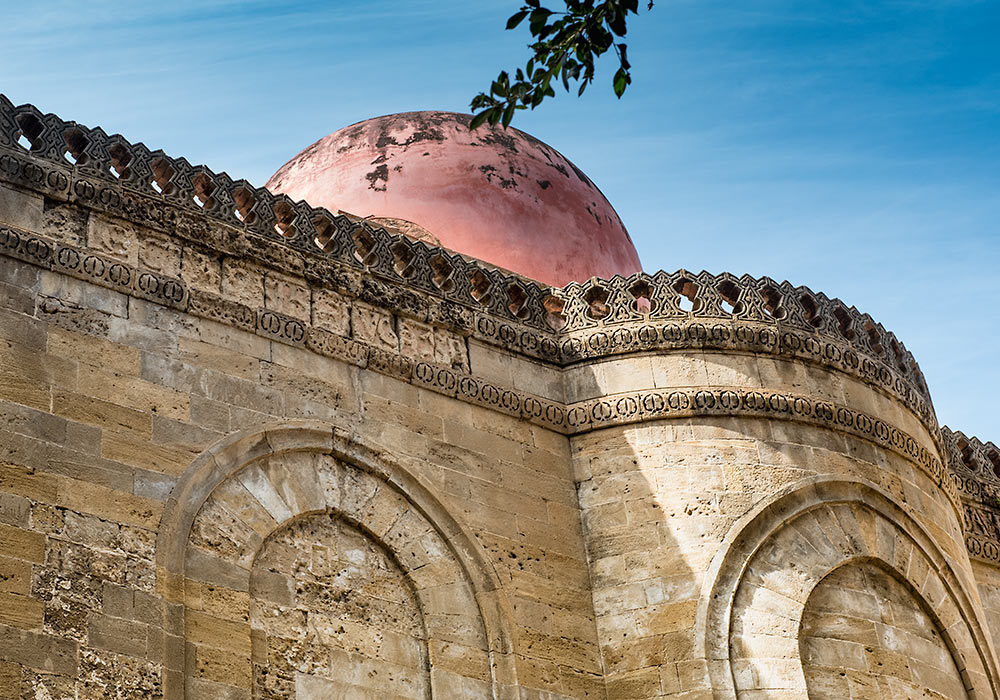
Detail of The Church of San Cataldo (Chiesa di San Cataldo).
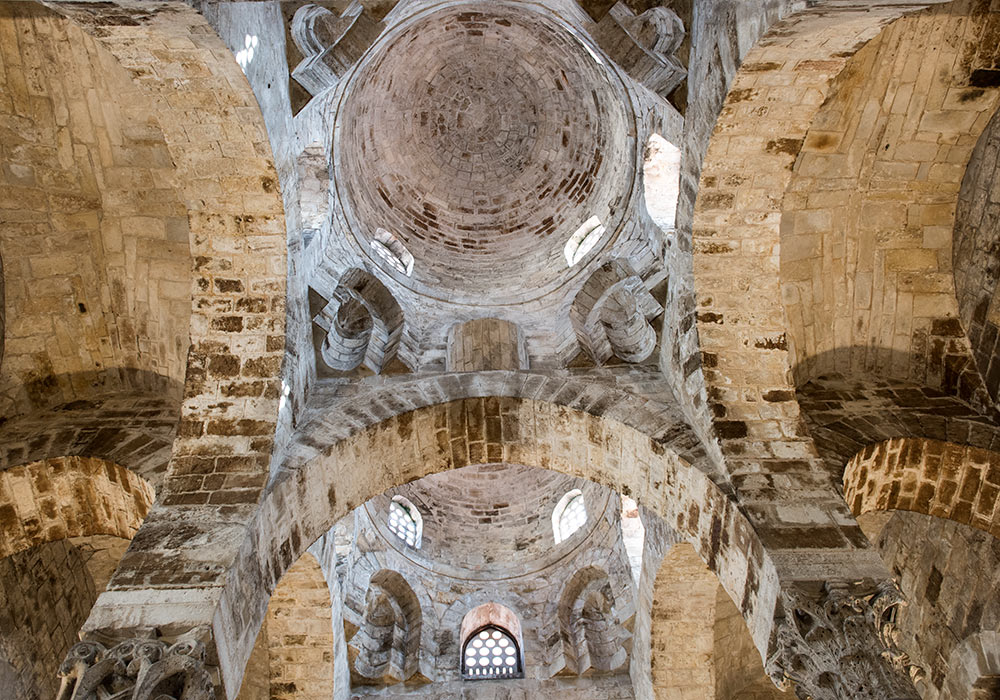
The interior of San Cataldo was never finished, but is still intriguing.
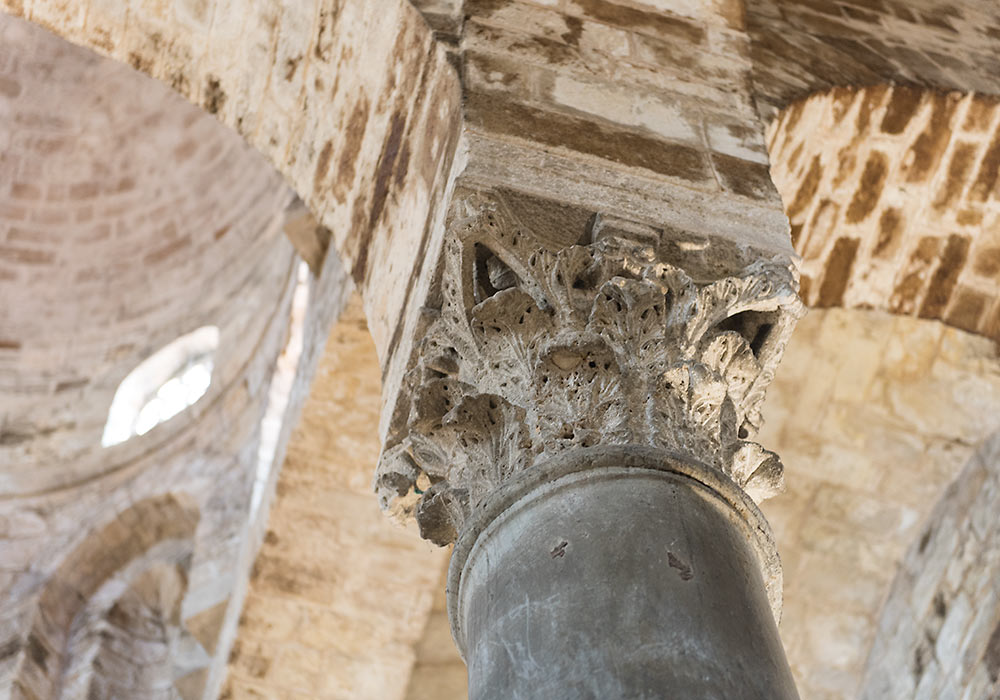
One of the surviving capitals in San Cataldo.
Jean Paul Barreaud:
Docs, Reportages, Photos and Tours of Palermo.
Click here to book or read more!
UNESCO’s World Heritage List
Arab-Norman Palermo and the Cathedral Churches of Cefalú and Monreale (Italy) - new on the list (2015)
Located on the northern coast of Sicily, Arab-Norman Palermo includes a series of nine civil and religious structures dating from the era of the Norman kingdom of Sicily (1130-1194): two palaces, three churches, a cathedral, a bridge, as well as the cathedrals of Cefalú and Monreale. Collectively, they are an example of a social-cultural syncretism between Western, Islamic and Byzantine cultures on the island which gave rise to new concepts of space, structure and decoration. They also bear testimony to the fruitful coexistence of people of different origins and religions (Muslim, Byzantine, Latin, Jewish, Lombard and French).
Palermo
- Palazzo dei Normanni (The Norman Palace)
- Cappella Palatina (The Palatine Chapel in the Norman Palace)
- Church of San Giovanni degli Eremiti
- Church of Santa Maria dell'Ammiraglio (also known as the Martorana)
- Church of San Cataldo
- Cathedral of Palermo
- The Zisa Palace (La Zisa)
- The Cuba Palace (La Cuba)
Norman Cathedrals
Genoa-Palermo ferry instructions
If you are heading for Sicily coming from the north, you may want to take the GNV ferry from Genoa (Genova) to Palermo. It departs late in the evening and arrives in Palermo the following evening.
Here is how you find the GNV ferry in Genoa by car:
- take the motorway exit Genova Ovest
- keep left and follow directions for "Porto - Terminal Traghetti"
- Then turn right down the helicoidal road which comes to the end at a set of traffic lights.
- Go straight on and after about 100 m. take the underpass to enter the Port and perform check-in operations.
The address for the navigation system is "Ponte Assereto".
GNV = Grandi Navi Veloci. Here is the Homepage: www.gnv.it

